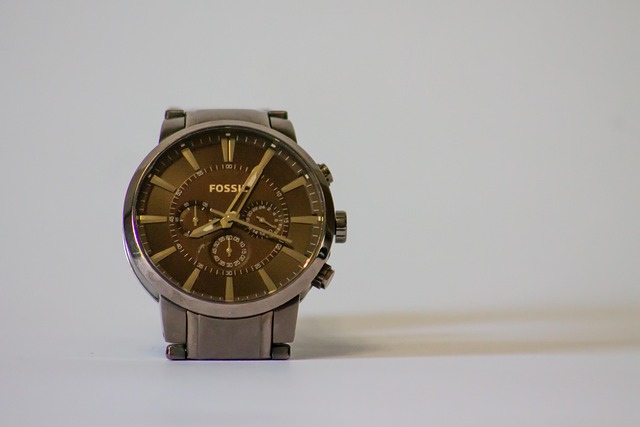High-quality e-commerce website design is pivotal for online success, focusing on user experience (UX) and conversion rates. Key elements include intuitive navigation, fast loading times, responsive design across devices, and a blend of aesthetics and functionality. By streamlining product discovery, filtering, and checkout processes, sites build trust and encourage purchases through detailed descriptions, customer reviews, and clear calls-to-action. Mobile optimization is essential, given the rise in mobile shopping, with responsive web design enhancing UX on smaller screens. Engaging visuals, consistent branding, and strategic ecommerce website design tactics captivate visitors and reinforce brand identity. Data-driven insights enable optimizations to improve conversion rates, customer satisfaction, and overall e-commerce success.
In the competitive realm of e-commerce, creating a high-quality website is no longer an option—it’s a necessity. This comprehensive guide delves into the key elements that transform a basic online store into a powerful sales engine. From understanding the core principles of high-quality e-commerce website design to optimizing for mobile and enhancing user experience (UX), we explore effective strategies to elevate your online presence. Discover how smart functionality, compelling branding, and data-driven analytics can drive conversions and set your e-commerce site apart in today’s digital landscape.
Understanding High-Quality E-commerce Websites

High-quality e-commerce websites are more than just digital storefronts; they are meticulously designed platforms tailored to enhance user experience and drive conversions. These sites prioritize intuitive navigation, fast loading times, and responsive designs to cater to a diverse range of customers across various devices. The focus is on creating a seamless shopping journey, from product discovery to checkout, ensuring customer satisfaction and fostering brand loyalty.
Ecommerce website design involves a strategic blend of aesthetics and functionality. A high-quality site leverages user interface (UI) and user experience (UX) best practices to present products in an appealing manner while streamlining processes like filtering, comparing, and adding items to carts. Furthermore, integration with secure payment gateways, clear product descriptions, and customer reviews all contribute to building trust and encouraging purchases, ultimately elevating the overall quality of the e-commerce experience.
Key Elements of Effective E-commerce Website Design

An effective e-commerce website design is a critical factor in attracting and retaining customers. Key elements include intuitive navigation, high-quality product images and detailed descriptions, and seamless checkout processes. A well-designed site enhances user experience, encouraging visitors to explore products and make purchases.
Responsive web design, optimized for various devices, is essential. Mobile optimization ensures accessibility and convenience for a growing number of online shoppers. Additionally, clear calls-to-action (CTAs) guide users through the buying journey, while engaging content and visual appeal foster brand loyalty and drive conversions.
User Experience (UX) Best Practices for Online Stores

Creating a high-quality ecommerce website begins with an exceptional user experience (UX). A seamless UX ensures that customers can easily navigate, browse, and purchase products online. Best practices include intuitive site navigation, clear product categorization, and high-quality visuals that accurately represent products. The design should be responsive, adapting seamlessly to various devices and screen sizes, to cater to the growing number of mobile shoppers.
Interactive elements, such as product filters and search functionality, streamline the shopping process. Fast loading times, simple checkout processes, and secure payment gateways are also crucial. Engaging content, like customer reviews and detailed product descriptions, builds trust and encourages purchases. Additionally, effective UX incorporates clear calls to action (CTAs), guiding users towards desired outcomes whether it’s making a purchase, subscribing to a newsletter, or contacting support.
Optimizing for Mobile: The Modern E-commerce Standard

In today’s digital landscape, an optimal mobile experience is no longer a luxury but a necessity for any successful e-commerce website design. With a vast majority of online shopping happening on smartphones and tablets, mobile-first approaches have become the modern standard. Responsive web design ensures that your site seamlessly adapts to various screen sizes and resolutions, providing a user-friendly interface regardless of device. This means visitors can easily browse products, compare prices, and complete purchases without frustration or inconvenience, directly contributing to higher conversion rates.
Moreover, optimizing for mobile involves more than just responsiveness. It includes fast loading times, intuitive navigation, and clear product presentations. Mobile users expect instant gratification, so a well-optimized e-commerce website design should incorporate efficient coding practices, high-quality images optimized for web, and minimal page load times. Additionally, ensuring the site is secure (HTTPS) instills confidence in mobile shoppers, encouraging them to make transactions with peace of mind.
Visual Appeal and Branding in E-commerce

A high-quality ecommerce website isn’t just about functionality; it also needs to captivate and engage visitors, reflecting the brand’s identity and values through its design. Visual appeal plays a crucial role in drawing customers in and fostering trust. A well-designed ecommerce website should feature clean, visually appealing layouts, high-quality images that showcase products effectively, and a color palette that aligns with the brand’s aesthetic. This initial impression is critical as it can determine how long visitors stick around to browse and make purchases.
Branding is integral to establishing a connection with customers, and ecommerce website design should seamlessly integrate the brand’s logo, typography, and overall visual style. Consistency in branding across the site helps create a cohesive experience that reinforces the brand’s message. Additionally, effective use of white space, clear calls-to-action (CTAs), and intuitive navigation further enhances user engagement, ensuring visitors can easily find what they’re looking for and making the purchasing process frictionless.
Enhancing Conversions through Smart Functionality

High-converting e-commerce websites don’t just happen; they’re meticulously designed to guide users through the buying journey seamlessly. Smart functionality plays a pivotal role in enhancing conversions, ensuring every element on the page serves a purpose. From intuitive navigation that allows shoppers to effortlessly browse products, to streamlined checkout processes that minimize friction, these features collectively contribute to an improved user experience.
Ecommerce website design should prioritize simplicity and efficiency. Features like product recommendations, live chat support, and mobile responsiveness further boost conversion rates by addressing customer needs promptly. By leveraging data-driven insights, designers can implement dynamic content, personalized offers, and targeted calls-to-action that resonate with individual shoppers, encouraging them to make purchases more frequently and with greater satisfaction.
Measuring Success: Analytics for High-Performing E-commerce Sites

Measuring success is a critical aspect of running a high-performing e-commerce website, allowing business owners to understand customer behavior and make data-driven decisions. Analytics tools play a pivotal role in this process by providing valuable insights into various key performance indicators (KPIs). By tracking metrics such as conversion rates, average order value, bounce rate, and time spent on the site, e-commerce businesses can identify areas for improvement and optimize their website design accordingly.
Effective ecommerce website design leverages analytics to create a seamless user experience. For instance, understanding customer journeys can help in streamlining checkout processes, improving product recommendations, and enhancing overall site navigation. Through constant analysis and adjustments based on data, high-quality e-commerce sites ensure they meet the evolving needs of their target audience, ultimately driving sales growth and fostering customer loyalty.
